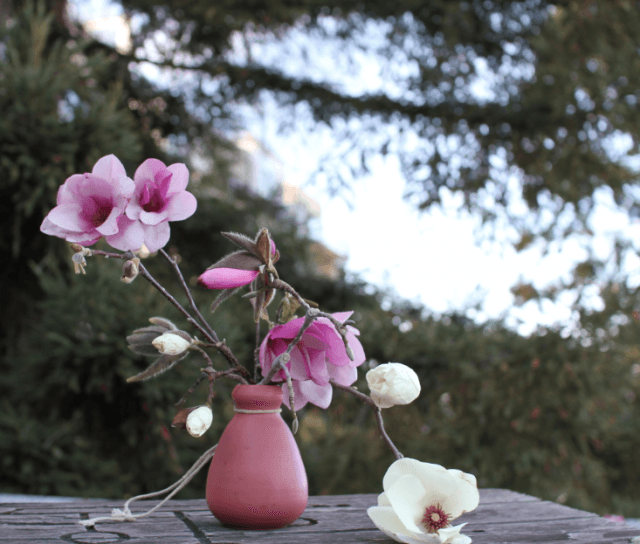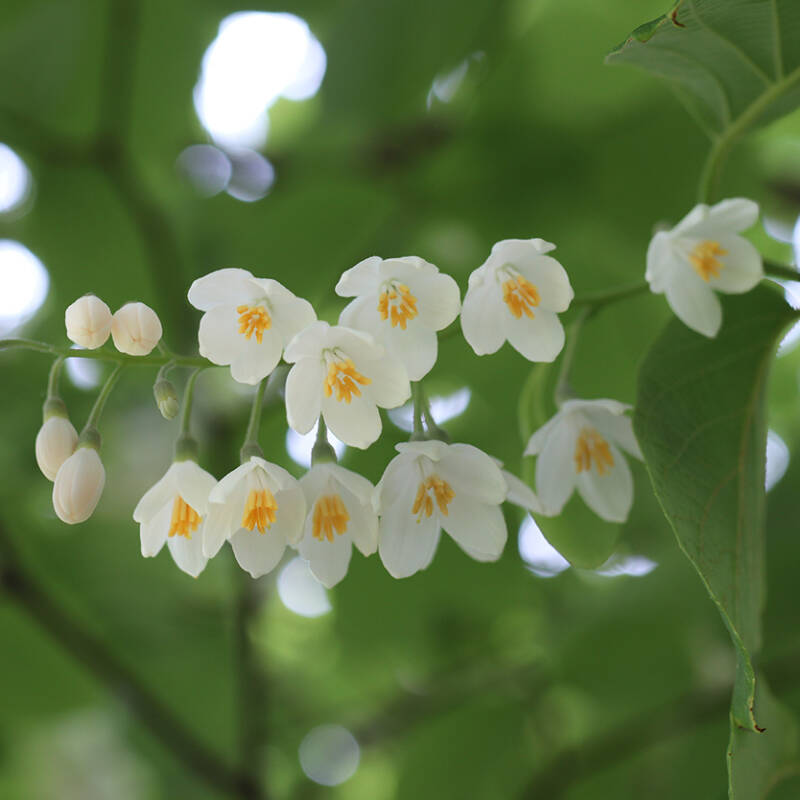You’re getting impatient for spring to arrive. You’ve had enough of winter. Time to move on! Time for spring to arrive.
Mother Nature, however, is on her own schedule. It varies from year to year and she won’t tell you if she decides to change things up with a late season cold snap. Because she can and she will. Don’t mess with Mother Nature. But you can go behind her back—you can jump-start spring by forcing flowering branches to bloom indoors.
Here’s how.
Forcing Branches Indoors

Cut flowering branches are long-lasting statement makers, suitable for any room of the house. A huge spray of apple blossoms in a large vase can be a focal point on your dining table, and a single magnolia bloom in a hand-me down porcelain cup and saucer on the kitchen counter can transport you back to your childhood.

To force branches indoors, make sure your pruning clippers are clean and sharp. Remember, you are not just picking a few branches for forcing, you are pruning the tree or shrub. If you only want a few branches, take them from inconspicuous areas and stay away from the larger main branches.

Once inside, place them in a clean vase filled with fresh water. Try not to place any blooms below the water level if possible and keep the vase out of direct sunlight and away from heat sources. Slicing or scoring the base of the branches will help the branches to take up more water and make them last longer. Change the water every few days.

One of the easiest flowers to force is forsythia. It’s as easy as cutting a few branches off the bush, bringing them inside and placing them in water. That’s it. Within a week, you’ll have happy sunny yellow flowers perking up your kitchen table.
If you’re lucky enough to have a pussy willow, you can do the same and have those furry little pussy toes and their delicate tiny yellow flowers in about two weeks.

Magnolias take a bit longer, four weeks on average. The fleshy flowers need to be treated with care, or they will bruise and discolor very easily.

Trees in the rose family—cherry, apple, crabapple, and quince—all can be forced inside and will take about four weeks to bloom. Stay away from the ornamental pears though, some of the varieties can have a very bad rotting fish like smell.

You can try other flowering trees, but some are more difficult than others such as lilacs. Lilacs tend to be more than a little picky and may wilt quickly. If you have a favorite tree or shrub that flowers, try one branch and see what happens.
And when the blooms are spent, don’t throw them in the trash! Check the branches for roots. One of the unmentioned benefits of forcing is propagation. You may have new baby plants. You can transfer them to a pot with potting soil and treat them as transplants.
See also:
- DIY: How to Clean and Care for Garden Pruners
- Harbingers of Spring: 11 Early Flowers to Cheer Our Chilly Souls
- 10 Easy Pieces: Flower Bulbs for Forcing









Have a Question or Comment About This Post?
Join the conversation